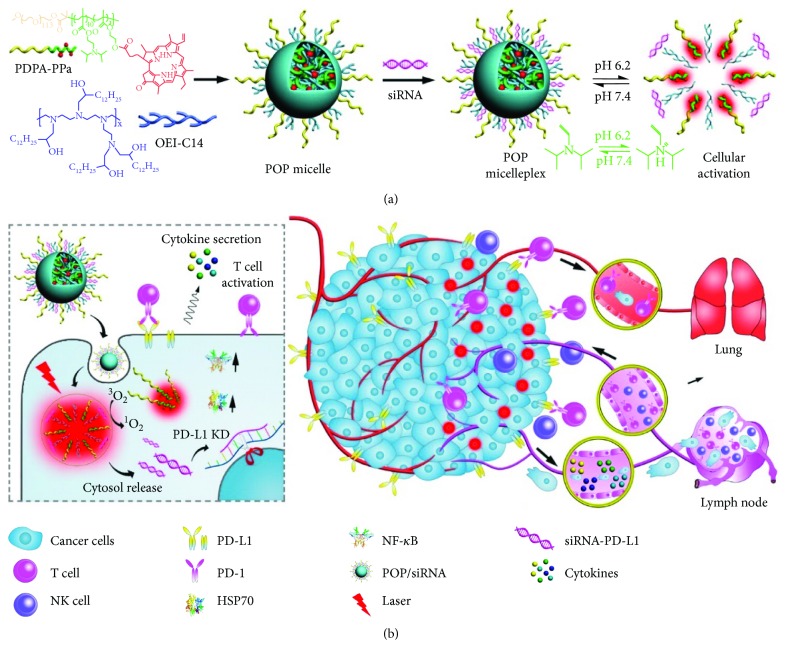Figure 5.
Schematic illustration of the acid-activatable micelleplexes for PD-L1 blockade-enhanced photodynamic cancer immunotherapy. (a) Chemical structure of the acid-activatable POP micelleplexes co-loaded with PPa and siRNA; the micelleplexes are dissociated at an acidic microenvironment due to the protonation of the tertiary amino groups of PDPA. (b) Cartoon schematic of the POP-PD-L1 micelleplex-mediated photodynamic cancer immunotherapy. The POP-PD-L1 micelleplexes induce ROS generation upon PDT. ROS consequently induces adaptive immune response by eliciting HSP70 and NF-κB expressions, triggering proinflammatory cytokine secretion, and recruiting tumor infiltrating T cells. RNAi of PD-L1 can further enhance pDT-induced antitumor immune response. The figure is adapted from [43] with permission of the copyright holder, American Chemical Society.

